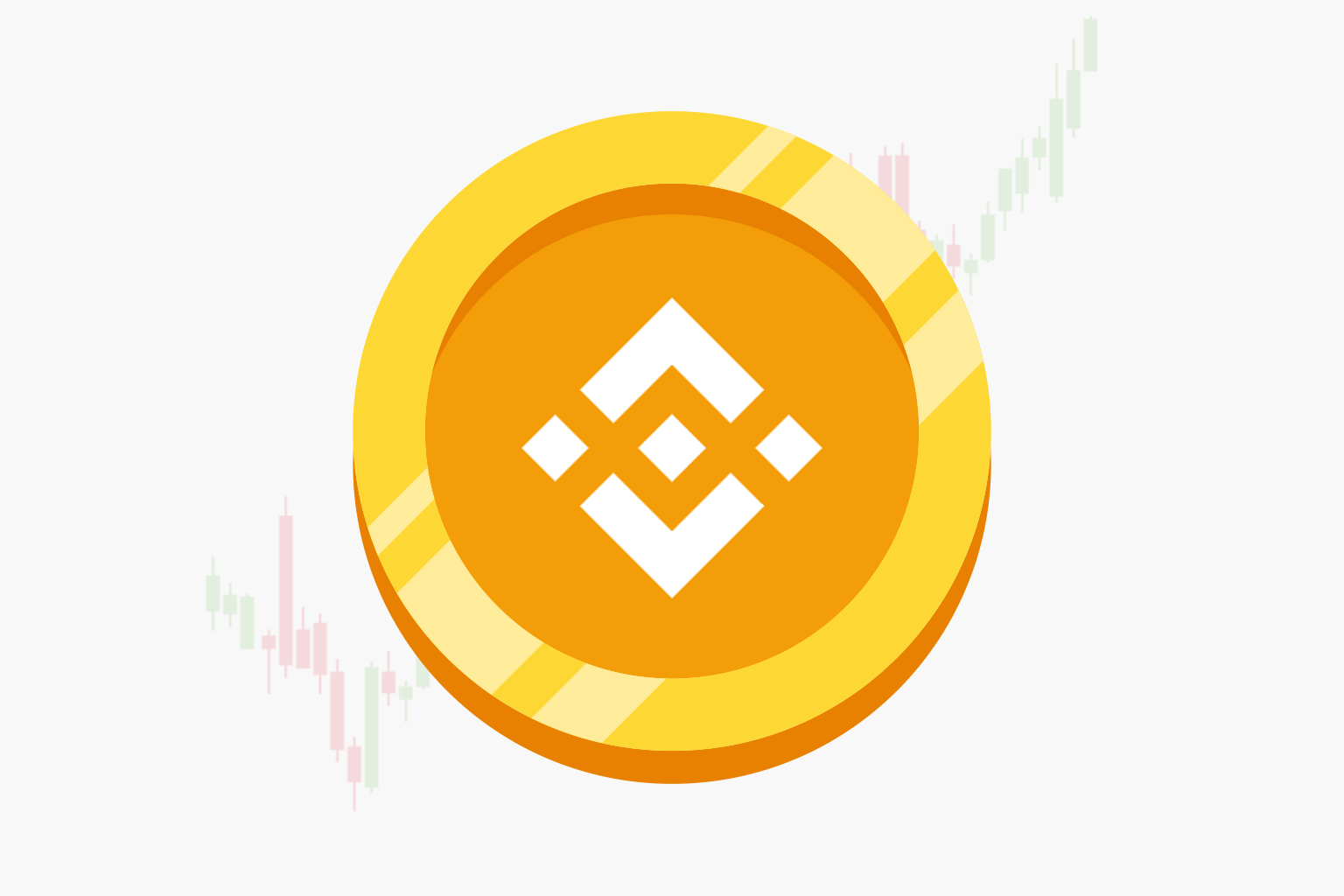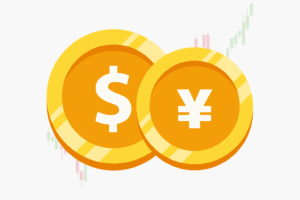Binance Coin (BNB) has become one of the most closely watched cryptocurrencies in the market, currently trading around $660-$663 USD according to major exchanges. The live BNB price today shows $662.81 USD with a market cap of approximately $97.48 billion, making it the 5th largest cryptocurrency by market value. As the native token of the world’s largest crypto exchange, BNB’s price movements often reflect broader market trends and Binance’s business performance.
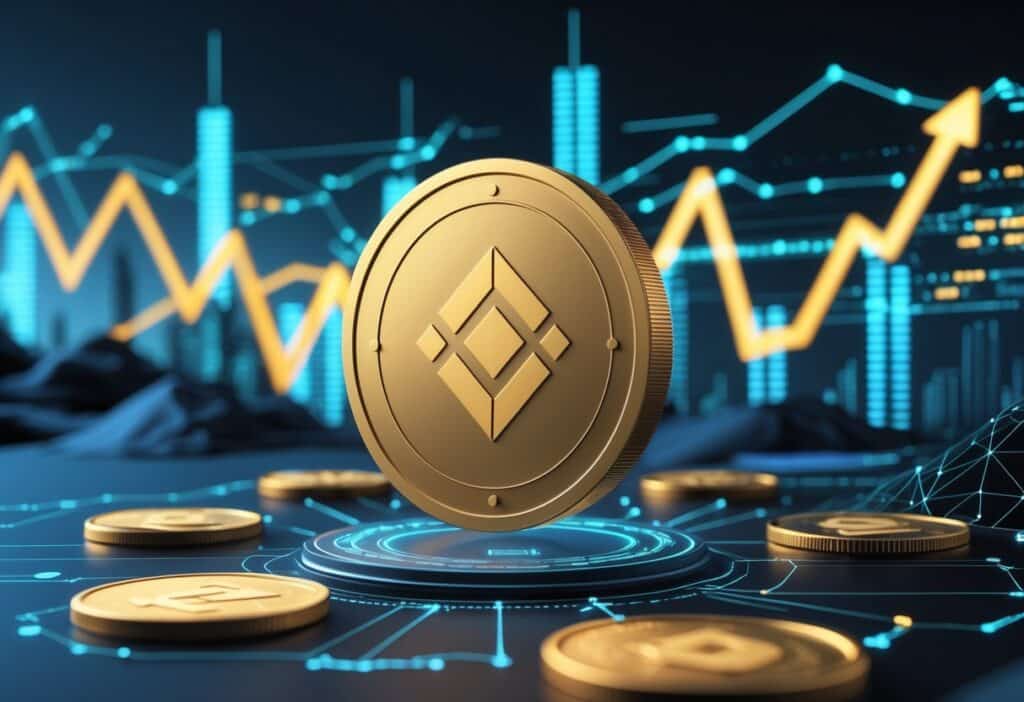
Understanding BNB’s price requires looking at multiple factors that drive its value. The token serves various purposes within the Binance ecosystem, from reducing trading fees to powering decentralized applications. I’ll walk you through the current market data, key statistics, and the main drivers that influence BNB’s price movements throughout different trading sessions.
Whether you’re storing BNB in a crypto wallet or considering your first purchase, knowing how this cryptocurrency behaves in the market is essential. This guide covers everything from real-time price tracking to the factors that cause BNB to rise and fall, plus answers to common questions about trading and settlement times.
View the BnB Live Price Feed
Key Takeaways
- BNB currently trades around $660-$663 USD with a market cap of nearly $98 billion, ranking as the 5th largest cryptocurrency
- The token’s price is influenced by Binance exchange performance, trading volume, and broader cryptocurrency market trends
- BNB operates on a 24/7 trading schedule across multiple exchanges with real-time price updates and instant settlement
Live Binance (BnB) Price & Change
The current BNB price is $655.98 with a market cap of $92.42 billion USD. BNB has shown a slight decline of 0.73% in the past 24 hours with active trading volume reaching $1.35 billion.
Don’t understand Binance? Read ‘What is BnB (Binance)‘
Intraday Chart (1 Day)
Looking at today’s price movement, I can see that BNB is trading at $662.81 according to recent data. The 24-hour trading volume stands at $1.28 billion, showing strong market activity.
The intraday chart reveals minor fluctuations throughout the day. Price changes have been relatively small, with BNB maintaining stability around the $660 range.
Key Intraday Metrics:
- Current Price: $655.98 – $662.81
- 24h Change: -0.73% to +0.26%
- Trading Volume: $1.05B – $1.35B
- Market Cap: $92.42B – $97.48B
The hourly price change shows -0.0736%, indicating minimal volatility. This suggests that Binance Coin is experiencing a consolidation phase with tight price ranges.
Historical Chart (1 Year)
The one-year chart shows significant price movements for Binance Coin. BNB reached an all-time high of $792.40 on December 4, 2024, representing a major peak in its price history.
Currently, BNB is down 16.64% from its record high. This pullback is part of normal market cycles that cryptocurrencies experience after reaching new peaks.
Annual Performance Highlights:
- All-Time High: $792.40 (Dec 4, 2024)
- Current Decline: -16.64% from peak
- Weekly Change: +0.5131%
- Circulating Supply: 147.5M tokens
The weekly performance shows a gain of 0.5131%, indicating some recovery momentum. This suggests that despite the recent decline from highs, BNB is showing signs of stabilization and potential upward movement in the short term.
Key Stats (Bullets)
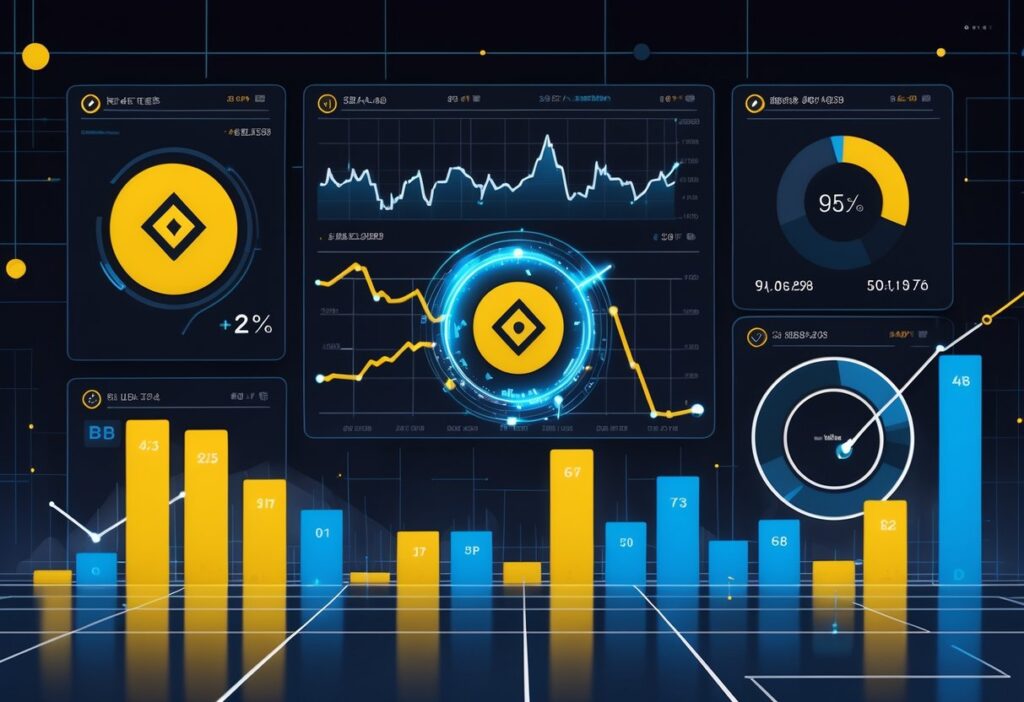
Based on the latest market data, I’ve compiled the essential BNB statistics that matter most to traders and investors.
Current Market Position • Price: $615.89 • Market Cap: $89.84 billion • 24h Trading Volume: $1.13 billion • 24h Change: -3.3%
Supply Metrics • Circulating Supply: 145,887,575 BNB • Total Supply: 145,887,575 BNB
• Maximum Supply: 200,000,000 BNB • Fully Diluted Valuation: $89.84 billion
The current market capitalization places BNB as the fourth-largest cryptocurrency. This ranking shows strong institutional confidence.
Price Performance • 1 Hour: 0.0% • 7 Days: +10.4% • 14 Days: +2.3% • 30 Days: -8.1% • 1 Year: +19.8%
Trading Activity • 24h Range: $613.93 – $637.07 • Daily Volume Rank: Top 10 globally • Exchange Listings: 300+ platforms
BNB’s market dominance sits at 3.4% of the total crypto market. The token burn mechanism has permanently removed over 54 million BNB from the maximum supply.
Key Milestones • All-time high reached $681 in 2021 • Market cap peaked above $110 billion • Trading volume averages $10+ billion daily
Latest News & Drivers
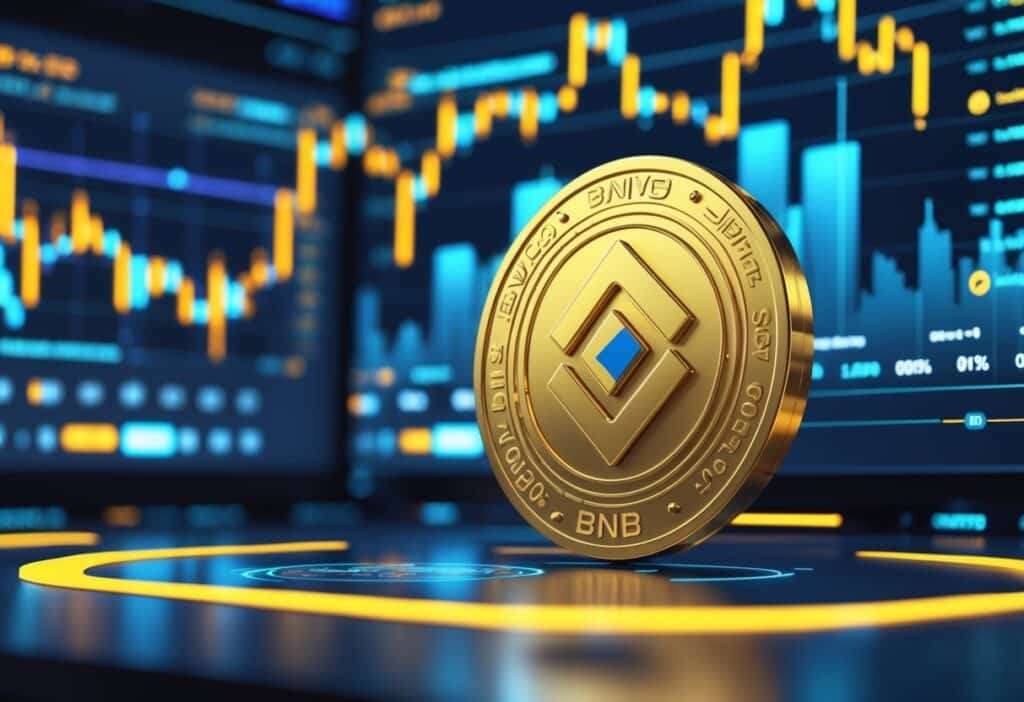
I’ve been tracking several key developments that are driving BNB’s recent price action. The Binance Coin price has surged past $650 after seven consecutive days of gains.
Major Portfolio Changes
The most significant driver I’m observing is Binance’s massive portfolio restructuring. The crypto exchange liquidated over $5.9 billion in Bitcoin, Ethereum, and Solana holdings while retaining 74% of its BNB reserves.
Here’s what Binance sold in 2025:
- Bitcoin: 94.1% reduction ($4.33 billion)
- Ethereum: 99.9% reduction ($583 million)
- Solana: 99% reduction ($89 million)
- USDT: 99.9% reduction ($2.98 billion)
Technical Momentum
I’m seeing strong technical indicators supporting BNB’s bullish trend. The current BNB price is around $663.88 with 2.67% gains in 24 hours.
The Parabolic SAR has flipped bullish, and RSI recovery to 51.21 shows moderate momentum. Trading volume has increased to 2.88M over recent sessions.
Market Positioning
Binance’s decision to prioritize BNB over other major cryptocurrencies signals confidence in the binance ecosystem. This strategic move by the binance exchange appears to be driving institutional and retail interest in the token.
The next resistance level I’m watching is $704, while support sits at $634.
What Moves Binance (BnB)?
I’ve observed that several key factors drive BNB’s price movements. The token’s utility within the Binance ecosystem creates constant demand pressure.
Trading fee discounts remain a major driver. Users who hold BNB get reduced trading fees on the platform. This creates steady buying pressure from active traders.
BNB operates as a governance token for BNB Chain decisions. Token holders can vote on network upgrades and changes. This gives BNB additional utility beyond just fee payments.
The auto burn mechanism reduces BNB supply over time. Binance regularly burns tokens based on trading volume. Lower supply can push prices higher when demand stays strong.
Smart contracts on BNB Chain require BNB for gas fees. As more developers build on the network, gas demand increases. This creates another source of buying pressure.
The Proof of Staked Authority (PoSA) consensus mechanism allows BNB staking. Users can earn rewards by staking their tokens. This locks up supply and can support price stability.
BNB’s current price around $656 reflects these various use cases. The token benefits from being the backbone of multiple Binance services.
Key price drivers include:
- Exchange trading volume
- BNB Chain activity
- New product launches
- Market sentiment
- Regulatory news
I notice that BNB often moves with broader crypto trends. But its utility features can provide some price support during market downturns.
Trading Hours & Settlement
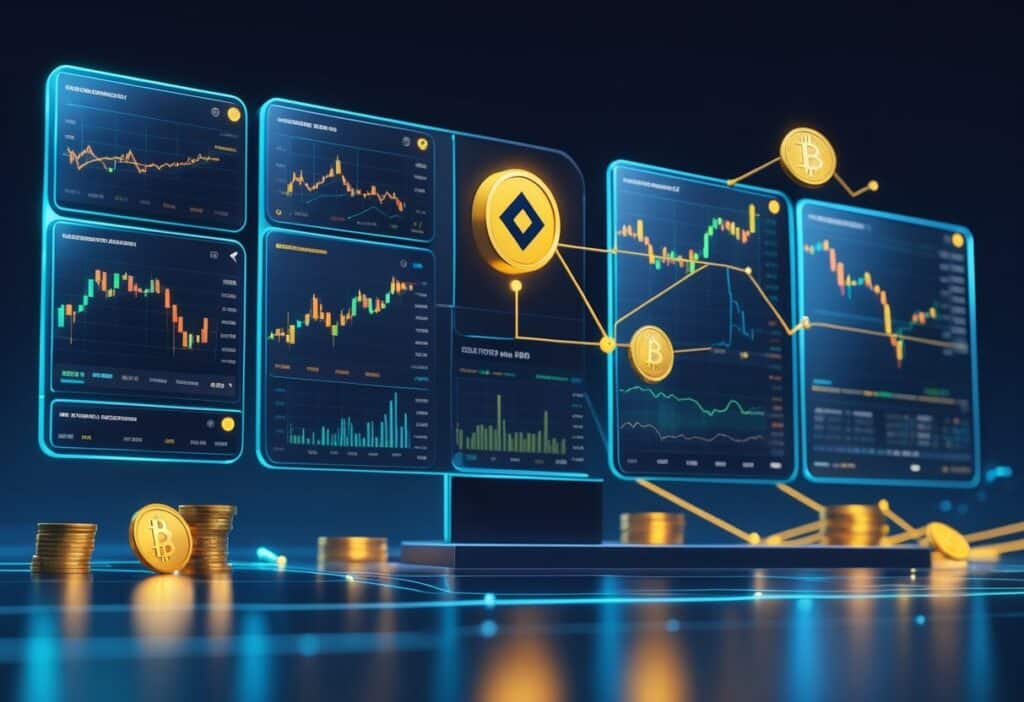
I can trade BNB on Binance 24 hours a day, 7 days a week. The exchange never closes for regular trading activities.
Spot Trading When I buy BNB through spot trading, my orders execute instantly during market hours. There are no specific settlement times for spot transactions.
Futures Trading BNB futures contracts have different settlement schedules. Quarterly futures require special attention near delivery dates.
Binance may postpone delivery and settlement processes during extreme price fluctuations. This happens when market manipulation or unusual circumstances occur near settlement time.
Key Trading Features:
- 24/7 availability for spot and futures
- Instant execution for most orders
- Flexible settlement timing for futures
- Market protection during volatile periods
I need to watch for announcements about delayed settlements. Binance notifies all users when delivery processes change.
The exchange prioritizes fair trading conditions. Settlement delays protect traders from manipulation during delivery windows.
Regular spot purchases face no settlement delays. I can buy BNB immediately when markets are active.
Futures traders should monitor delivery schedules carefully. Settlement timing affects position management and profit calculations.
Related Indices & ETFs
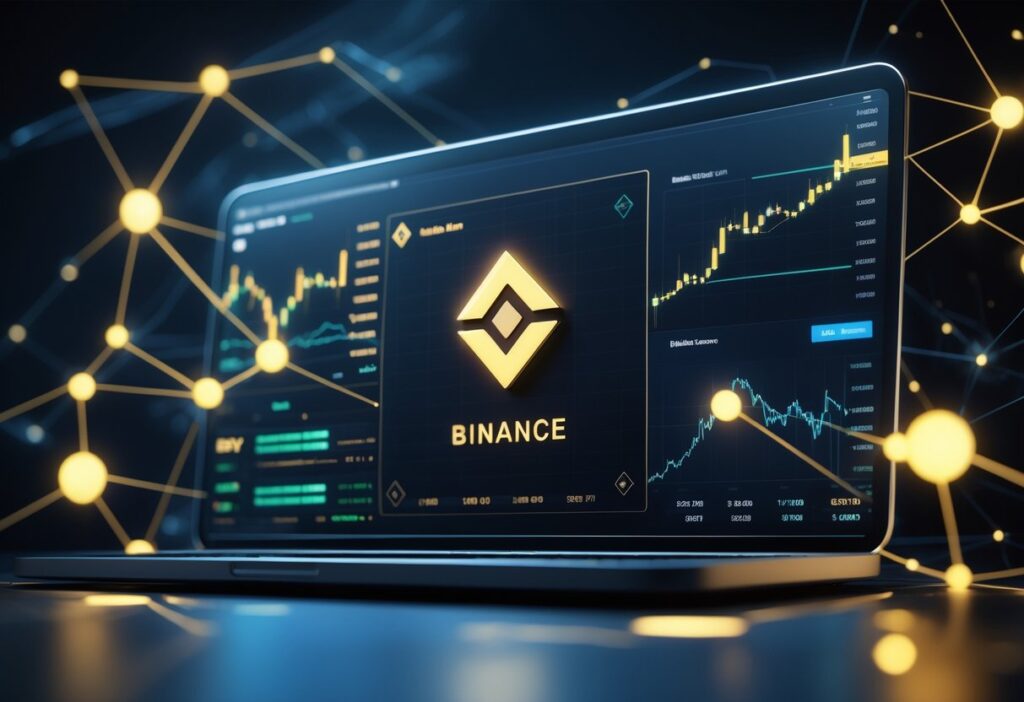
I can invest in BNB through several exchange-traded products without holding the cryptocurrency directly. The 21Shares Binance BNB ETP tracks BNB’s performance and is backed by physical holdings of the cryptocurrency.
This ETF trades under the ticker ABNB on various exchanges. I can find real-time quotes and historical data for this product on major financial platforms.
The 21Shares BNB ETP has 12 million euros in assets under management, making it a smaller ETF option. It uses a collateralized debt obligation structure to replicate BNB’s index performance.
Key Details:
- ISIN: CH0496454155
- Ticker: ABNB
- Structure: Exchange Traded Note (ETN)
- Backing: Physical BNB holdings
I should note that BNB originally ran on the Ethereum blockchain as an ERC-20 token before Binance launched its own Binance Chain. The token now operates on BNB Chain, which includes both Binance Chain and BNB Smart Chain.
BNB Smart Chain supports the Ethereum Virtual Machine (EVM), allowing developers to build decentralized applications (dApps). This dual-chain structure connects centralized exchange (CEX) functionality with decentralized exchange (DEX) capabilities.
The interactive charts and financial information help me track the ETF’s performance against BNB’s actual price movements in the cryptocurrency market.
Common Questions On Binance (BnB) Price Data
BNB price data updates happen in real-time throughout the day, but the cryptocurrency market operates differently than traditional stock markets. You cannot trade BNB as an index fund, since it functions as a direct cryptocurrency token.
How Often Is The Price Updated?
BNB price updates happen in real-time on most cryptocurrency exchanges and tracking platforms. I see price changes reflected within seconds as trading activity occurs.
The cryptocurrency market never closes. This means BNB prices can change 24 hours a day, 7 days a week. Unlike stocks, there are no market hours that limit when prices can move.
Most price tracking websites refresh their data every few seconds. Some platforms update even faster, showing price changes almost instantly as trades happen on exchanges.
Key Update Frequencies:
- Real-time platforms: 1-3 seconds
- Standard websites: 5-30 seconds
- Mobile apps: 10-60 seconds
Trading volume also affects how often I see meaningful price changes. During high-volume periods, prices update more frequently because more trades are happening.
Why Doesn’t The Index Trade On Weekends?
BNB is not an index that stops trading on weekends. Cryptocurrency markets operate continuously, so BNB trading continues 24/7 including weekends and holidays.
I can buy and sell BNB at any time of day or night. This differs from traditional stock markets that close on weekends and holidays.
The confusion might come from comparing BNB to stock market indices like the S&P 500. Those indices only trade during business hours because they track stocks that have set trading schedules.
BNB Trading Schedule:
- Monday through Sunday: 24 hours
- No holidays or breaks
- Continuous price updates
Weekend trading can sometimes show different patterns. Volume might be lower on weekends, which can lead to more price volatility.
Can I Trade The Index Directly?
BNB is not an index – it’s a cryptocurrency token that I can trade directly on exchanges. I cannot trade it as an index fund because it represents a single digital asset, not a basket of investments.
I can buy BNB directly through cryptocurrency exchanges like Binance, Coinbase, or other trading platforms. The token trades under the symbol BNB against various currency pairs.
Direct Trading Options:
- Spot trading on exchanges
- Futures contracts
- Options trading (limited platforms)
- Peer-to-peer trading
BNB functions as Binance’s native token rather than an index tracking multiple assets. I purchase actual BNB tokens when I trade, not shares of a fund.
Some investment products might create BNB-related funds in the future. But currently, I must trade the cryptocurrency directly to gain exposure to its price movements.
Frequently Asked Questions
BNB’s price moves based on ecosystem growth, token burns, and market sentiment. The token has shown strong performance since 2017, with price predictions ranging from $450 to over $1,200 for 2025.
Several key elements drive BNB’s price movements. The quarterly token burns reduce supply over time, creating deflationary pressure that can support price appreciation.
Ecosystem growth plays a major role. When more users interact with BNB Smart Chain for DeFi, NFTs, and GameFi applications, demand for BNB increases since it’s needed for transaction fees.
Trading volume on Binance also impacts price. Higher exchange activity often correlates with increased BNB demand for trading fee discounts.
Market sentiment and regulatory developments affect BNB like other cryptocurrencies. Positive news about Binance or blockchain adoption can drive prices higher.
BNB has delivered strong returns since its 2017 launch. The token started below $1 and reached approximately $25 during the 2017-2018 bull run.
During the 2020-2021 crypto boom, BNB surged past $600. This growth was driven by DeFi adoption on BNB Smart Chain and demand for low-fee alternatives to Ethereum.
The 2022-2023 bear market caused significant corrections. However, BNB maintained its position as a top-5 cryptocurrency by market cap throughout the downturn.
In 2024, BNB showed recovery alongside broader crypto market improvements. The token benefited from renewed interest in Layer-1 blockchains and DeFi applications.
BNB serves as the native token for BNB Chain, which includes both the Beacon Chain and Smart Chain. Users need BNB to pay gas fees for all transactions on these networks.
The token provides trading fee discounts on Binance exchange. Users can save 25% on trading fees when paying with BNB instead of other cryptocurrencies.
BNB grants access to Binance Launchpad token sales. Holding and staking BNB allows participation in Initial Exchange Offerings for new crypto projects.
The token powers Binance Pay for merchant payments. Users can spend BNB at thousands of online and offline merchants worldwide.
Lista BNB staking provides additional earning opportunities. Participants can earn rewards while supporting network security through validation.
Expert forecasts for 2025 vary based on different market scenarios. Conservative estimates place BNB between $450-$700, assuming steady user growth and consistent token burns.
Moderate predictions range from $700-$950. These projections assume higher total value locked in DeFi protocols and increased dApp usage on BNB Smart Chain.
Bullish scenarios suggest $1,000-$1,200 or higher. These forecasts depend on explosive DeFi adoption, institutional demand, and broader altcoin market growth.
The current BNB to USD price stands at $657.64 according to recent data. Price movements depend heavily on ecosystem development and market conditions.
BNB typically trades at a fraction of Bitcoin’s price per token. While Bitcoin focuses on store of value, BNB derives value from utility within the Binance ecosystem.
BNB’s market cap consistently ranks in the top 5 cryptocurrencies. This positioning reflects its strong adoption and diverse use cases compared to many other altcoins.
Unlike Bitcoin’s fixed supply, BNB has a deflationary model. Regular token burns reduce total supply toward a 100 million cap, potentially supporting long-term price appreciation.
BNB’s price correlation with Bitcoin varies by market cycle. During bull runs, BNB often outperforms Bitcoin due to increased DeFi and altcoin activity.
Fundamental analysis examines BNB’s utility and ecosystem metrics. Key indicators include daily active addresses, transaction volume, and total value locked in DeFi protocols.
Token burn data provides important insights. The quarterly burn mechanism removes BNB from circulation, creating deflationary pressure that can support price increases.
Technical analysis uses chart patterns and trading indicators. Common tools include moving averages, support and resistance levels, and volume analysis.
On-chain metrics track network activity and token distribution. These include staking participation rates, validator performance, and large holder movements.
Market sentiment analysis monitors social media, news coverage, and institutional interest. These factors often influence short-term price movements and trading volumes.

